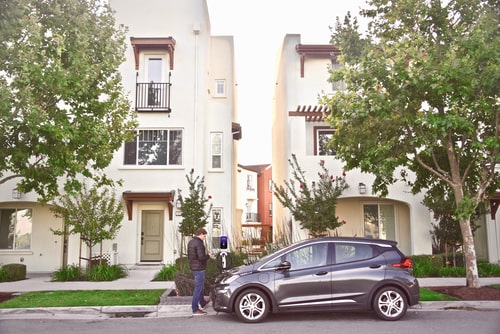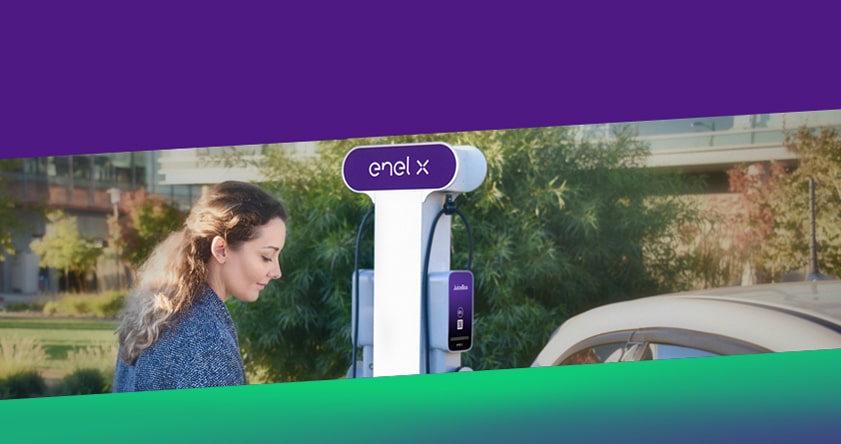5 Reasons Why You Need EV Charging At Your Multifamily Community

Sales of electric vehicles currently represent only about three percent of the new car market. But that’s about to skyrocket. Nearly every major automaker is expected to introduce several new and exciting electric models to the market over the next few years. This is going to result in a significant increase in EV ownership across the US. Owners and managers of multifamily communities need to get ready: Bloomberg New Energy Foundation forecasts that EVs will steadily rise in the next two decades, accounting for 58 percent of global new car sales by 2040 and property owners and managers are just one out of many groups that will need to prepare themselves for this change.
While the lion’s share of past EV sales were attributed to private homeowners, the next big wave of EV adoption is expected among residents of condos, apartment dwellers, homeowner associations, and other multifamily communities. Here are the five main reasons why multifamily complexes need to take action now and install an electric vehicle charging system to prepare themselves for the evolving EV landscape.
1. To attract the most desirable residents
A 2020 National Multifamily Housing Council (NMHC) revealed that nearly three-quarters of apartment renters are either “interested or would not rent without” properties with green initiatives. This means renters are looking for an apartment community that provides electric vehicle chargers, charging equipment, and special parking for EV owners. An earlier study, in 2016, by Multifamily Executive magazine, showed that 15% of renters said they planned to purchase an electric vehicle in the next five years and that number has since grown.
EV owners are high-income earners. The Q4 2019 Experian Automotive Quarterly Briefing reported that 90 percent of EV buyers have household earnings above $250,000 per year. More than 70 percent are identified as married, and more than 80 percent have college or postgraduate degrees. The absence of EV charging stations in multifamily communities could potentially turn off this coveted demographic at the very beginning of their housing search.
The positive impact of electric vehicles is not an abstract concept. Emission and noise-free EVs make underground and enclosed parking structures much more pleasant and the displacement of fossil fuels creates an immediate bonus for the community. As multifamily communities offer amenities like rooftop decks, gyms, outdoor kitchens, and gardens in order to attract potential residents, the addition of EV charging stations is a no-brainer.
2. EV charging is a matter of law
A growing number of states, including California, Colorado, Florida, Hawaii, New York, and Oregon, have begun to adopt “Right to Charge” laws. California, the largest EV market in the United States, requires that a portion of parking areas of multi-use dwellings install EV charge ports.
Cities are rapidly implementing EV-oriented building codes. New York and San Francisco require buildings undergoing renovations to include upgrades to accommodate public charging stations. In Vancouver, city officials raised the existing right to charge regulation to 20 percent of parking spots in multifamily buildings. Since 2019, 100 percent of parking spots need to be equipped with an electrical outlet capable of providing Level 2,240-volt EV charging or higher.
The list of cities that have EV-friendly municipal building codes, including Atlanta, Denver, Palo Alto, and Seattle, will continue to grow. In January 2020, the International Code Council (ICC) approved and distributed nationwide best practices and standards for public charging stations. The ICC says there will need to be 9.6 million new EV charging ports by 2030, with nearly 80% located in single and multifamily residential buildings.
3. Rebates for EV charging stations can dramatically cut costs
The cost of installing commercial EV charging stations at your multifamily dwelling can be covered by a mix of federal, state, utility, and local EVSE incentives. If you install before December 31, 2020, you can receive a federal electric car tax credit for 30% of the cost to purchase and install the station, up to $30,000 of the total cost of a commercial installation The number of EVSE rebates, grants, and other incentives available across the country is staggering. Local utilities, air districts, and municipalities all help multifamily dwellings to cover the initial costs.
The California Energy Commission offers rebates of up to $80,000, for the purchase and installation of eligible public charging in Southern California. The Sacramento Municipal Utility District offers rebates to multifamily housing of $1,500 per Level 2 chargers for up to 20 Level 2 EV charging stations.
These incentives are not limited to California - countless other jurisdictions have similar offerings:
● Arizona’s Salt River Project utility offering a rebate of $1,500 per port for multifamily customers who install networked Level 2 charging stations.
● Tucson Electric Power gives rebates of up to $6,000 per port to multifamily dwellings purchasing and installing two to five EVSE ports.
● Rocky Mountain Power in Utah provides rebates up to $2,500 for single port stations and $3,500 for multi-port stations.
● Multifamily properties in Austin, Texas are eligible for a rebate of up to 50 percent of the cost to install an approved Level 2 charging station.
● New Jersey’s EV Charging Grants Program covers up to 60% of the cost, including $5,000 for a single-port Level 2 charging station and $6,000 per dual-port Level 2 charging station.
Check local information to learn about rebates available in your area.
4. The technology and processes are mature
The EV market in the United States will soon enter its second-decade and many multifamily owners are still educating themselves on the technology and best practices for installing an electric vehicle charging system in their buildings.
At first blush, adding 30-50-amp service for all your EV-charging residents might sound daunting. But smart, connected JuiceBox Pro charging stations that are integrated with a managed back-end solution, ensure that any number of EVs—even 100 or more in one community—can recharge as needed without overwhelming your electric infrastructure.
Load-balancing systems can automatically adjust power to each connector, including factors, such as the number of cars getting juice and low Time-of-Use utility rates. Building managers (and individual EV owners) can monitor and manage the charging via online dashboards and app-based tools, similar to other smart energy apps like Nest.
Lessons from these mature systems—developed over the course of more than hundreds of installations—can be applied at the outset of installation planning: How many stations do you need? Where should chargers be placed? What electric capacity is required? What permits are required? How does the pricing structure work? What’s the sustainable business model?
By relying on best-in-class providers of EV charging equipment and the technological history to back them up, multifamily properties can remove the guesswork.
5. EVs help you meet sustainability goals
The carbon footprint of multifamily communities is inherently larger than that of single-family homes, which is why it’s critical for a property owner and/or developer to apply best practices in sustainable building design and eco-friendly materials. Achieving Leadership in Energy and Environmental Design (LEED) certification, a point-based system, can document that your facility is taking advantage of the latest and greatest green-technology.
Adding EV charging stations will also earn points toward LEED status. There are provisions for the percentage of parking spaces dedicated to green vehicles and their preferred locations. Some property owners make their EV charging stations available to the public, even on a limited basis, to draw new desirable clientele and spread resources among the broader community.
But the rewards go beyond making smart investments to gain a market advantage and future-proof your building When you install commercial EV charging stations in your multifamily community, you become a part of the electric vehicle movement. Your influence extends beyond the perimeter of your property to wherever those zero-emission vehicles travel.



